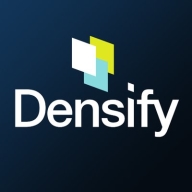

Azure Cost Management and Densify are both cloud cost management solutions, competing within the cloud services sector. Densify appears to have the upper hand due to its comprehensive feature set, enabling better optimization and management across multiple cloud platforms.
Features: Azure Cost Management offers cost tracking and allocation within Azure, predictive analytics, and budget controls. Densify provides multi-cloud optimization, advanced resource utilization insights, and dynamic right-sizing recommendations.
Room for Improvement: Azure Cost Management could expand its optimization features beyond Azure and improve user interface intuitiveness. Real-time cost alerts and broader multi-cloud integration would enhance its value. Densify could streamline its configuration process and invest in more intuitive user experiences. Simplifying reporting tools and enhancing integration with non-standard cloud environments could also improve usability.
Ease of Deployment and Customer Service: Azure Cost Management integrates seamlessly within Azure, offering easy deployment for existing users and access to Microsoft's established support. Densify requires more configuration but offers dedicated technical support tailored to complex deployments, providing detailed guidance through its support channels.
Pricing and ROI: Azure Cost Management offers a cost-effective solution with predictable pricing that aligns with Azure's services, appealing to businesses looking to manage costs within Azure. Densify, though potentially higher in setup cost, provides substantial ROI through its extensive optimization capabilities, beneficial for businesses operating in diverse cloud environments.
| Product | Market Share (%) |
|---|---|
| Azure Cost Management | 6.0% |
| Densify | 2.0% |
| Other | 92.0% |


| Company Size | Count |
|---|---|
| Small Business | 11 |
| Midsize Enterprise | 6 |
| Large Enterprise | 32 |
| Company Size | Count |
|---|---|
| Small Business | 1 |
| Midsize Enterprise | 1 |
| Large Enterprise | 9 |
Azure Cost Management provides actionable insights for IT professionals to optimize cloud expenses and align budgets with strategic goals. It features real-time visibility and analytics for efficient resource management.
Azure Cost Management offers a comprehensive suite of tools for cost analysis and control, including budgeting alerts and integration capabilities to optimize resource spending. Its intuitive interface simplifies navigation while providing trend analysis, forecasting, and cost-saving recommendations. By delivering detailed insights into resource usage, Azure helps organizations manage expenses effectively, enabling strategic financial planning through clear visualizations and reports.
What are the key features of Azure Cost Management?Azure Cost Management is widely implemented in industries seeking to monitor and control budgets, optimize costs, and track resource spending. Companies utilize it to gain billing insights, understand usage patterns, and minimize cloud expenses. It is instrumental in managing infrastructure costs and supporting cost management strategies across different deployments, making it valuable for projecting profitability and setting cost alerts.
Densify is a hybrid cloud and container resource management platform that makes workloads self-aware of their precise resource requirements and automates the resource management and selection process. This solution helps you control your cloud spend and also helps your apps perform and scale better. Densify enables you to match your cloud requirements with the optimal cloud supply. Additionally, Densify is the only technology that leverages patented, predictive machine learning-powered analytics to perform advanced modeling of workload patterns, and provide precise optimization directives. It is ideal for cloud engineers, container platform owners, and IT finance.
Densify works by:
Densify Features
Densify has many valuable key features. Some of the most useful ones include:
Densify Benefits
There are many benefits to implementing Densify. Some of the biggest advantages the solution offers include:
We monitor all Cloud Cost Management reviews to prevent fraudulent reviews and keep review quality high. We do not post reviews by company employees or direct competitors. We validate each review for authenticity via cross-reference with LinkedIn, and personal follow-up with the reviewer when necessary.